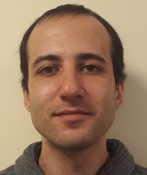Benchmark of 4DCT Derived Motion Models with a Biomechanical Lung Model for Tumor Position Estimation
P Sabouri1*, M Ranjbar2, S Mossahebi3, A Sawant3, P Mohindra3, G Lasio3, L Topoleski2, (1) Miami Cancer Institute, Miami, FL, (2) University of Maryland, Baltimore County, MD, (3) University of Maryland, School of Medicine, Baltimore, MD
Presentations
TH-IePD-TRACK 3-1 (Thursday, 7/29/2021) 12:30 PM - 1:00 PM [Eastern Time (GMT-4)]
Purpose: Several CT-based surrogate motion models (SMM) have been proposed to simulate the complexities of respiratory motion and cycle-to-cycle variations in the thoracic anatomy. However, the lack of high-contrast internal imaging on most linear accelerators limits evaluating the model’s intra- and inter-fractional reproducibility and validity. Biomechanical models can serve as a reference for SMM verification because they are able to capture the underlying biophysical principles of lung-tumor motion. We used a hybrid finite-element (FE) lung-tumor motion model to benchmark the accuracy of two SMMs for tumor position estimation.
Methods: 4DCT, VisionRT surfaces (VRT), and ~30s lateral and anterior-posterior fluoroscopic images (FLs) were collected from five lung-SBRT patients and used to construct two previously published CT-based volumetric SMMs: SMM-1 used a correspondence between 4DCT and phase-averaged VRT surfaces to estimate deformation vector fields for new VRT surfaces. SMM-2 integrated lung-surface motion observed in a few FLs to update the external-internal correlation. A FE biomechanical lung-tumor model was constructed and used as reference to verify SMM estimated tumor position. Prior validation of our FE model for 4DCT found an accuracy of 3 mm for centroid position estimation.
Results: Changes in the external-internal correlation were frequently encountered and degraded SMM-1 performance. The correlation between internal lung-surface and tumor centroid motion was more stable, and SMM-2 fidelity was preserved with updates. Model updates significantly improved agreement with the biomechanical model: the 99th percentile absolute difference in tumor SI/AP centroid motion was reduced from 7/5.2 mm (SMM-1) to 3.4/2.6 mm (SMM-2). Differences between the SMM-2 and biomechanical model were most notable for tumor positions beyond the original training data set (4DCT), where SMM-2 resorted to extrapolation.
Conclusion: Biomechanical models offer a robust mechanism for verifying SMM-estimated internal lung-tumor motion. Updating the external-internal correlation preserves SMM fidelity and significantly improves agreements with the FE model.
ePosters
Keywords
Image-guided Therapy, Modeling, Finite Element Analysis
Taxonomy
Contact Email



